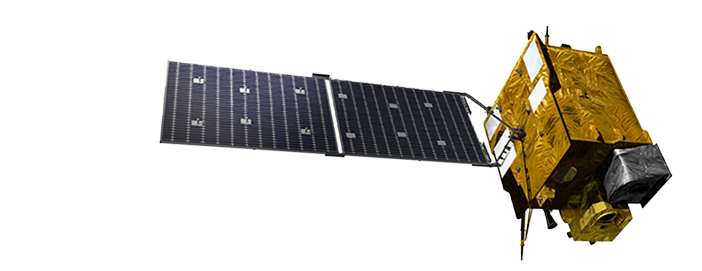



KARI developed Cheollian 1’s marine payload(GOCI-I) to be the world’s first satellite to observe the ocean around the Korean Peninsula (2500km × 2500km) from the geostationary orbit. GOCI-I observes the Korean Peninsula 8 times a day with resolution of 500m and provides 8-channel data for each observation to produce 13 observation results.
Cheollian 2B’s marine payload(GOCI-II) observes the ocean with 250 m resolution, which is 4 times the observation performance of Cheollian 1. It has 13 observation channels consisting of 9 visible light channels, 3 IR channels, and 1 broadband channel. Cheollian 2B’s marine payload(GOCI-II) is expected to produce 26 kinds of observation outputs, or twice as many as those of Cheollian 1, by observing the Korean Peninsula 10 times daily for 30 minutes and through daily global observation for 240 minutes.
GOCI-II can monitor the ocean's carbon cycle as well as the marine environment such as red tide/green algae and salt concentration and marine pollution such as oil pollution. Moreover, it provides information on the predicted fishery environmental changes by observing the ocean's current circulation, fish food information, and sea surface temperature distribution. As such, the marine payload provides satellite-based convergence analytical data in semi-real time. It responds early to marine disasters/emergencies caused by marine abnormalities such as red tide/green algae by continuously monitoring the marine environment in the Korean territorial sea and exclusive economic zone. It can contribute to the production of forecast data for marine ecosystem changes caused by global climate change.
| Subject | Cheollian Satellite 1 | Cheollian Satellite 2B | Remarks |
|---|---|---|---|
| Observation resolution | 500 x 500 m2 | 250 x 250m2 (@130E, 0N) | About four times' improvement |
| Number of observation channels | 8 channels (Visible: 6, near IR: 2) | 13 channels (Visible: 9, near IR: 3, filming stars: 1) | About 1.6 times' improvement (Added a channel for filming stars) |
| Number of observations | 8 times/day (No global observation) | Regional observation: 10 times/day Global observation: Once/day | About 1.3 times' improvement |
| Operating life | 7 Years | 10 Years | Increased operating life |
| Observation mode | Reference regional observation with solar correction | Reference area observation, global observation, selective regional observation, solar/lunar correction, filming of stars | Various observation modes available |
| Products | 13 types | 26 types | About two times' improvement |